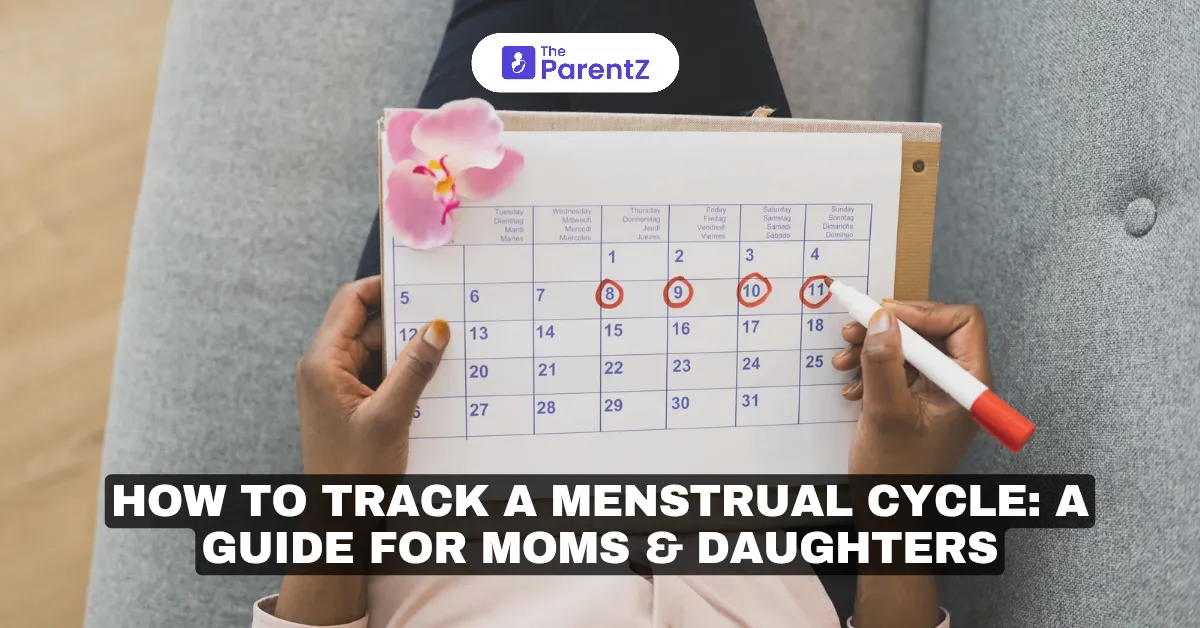Why Tracking a Menstrual Cycle is Important?
Tracking a menstrual cycle helps predict the next period, preventing surprises and making it easier to plan for school, sports, or travel. It also helps in understanding symptoms like cramps, mood swings, and cravings while identifying any irregularities that might signal a health concern. Encouraging your daughter to track her cycle from the beginning will make her feel more confident and prepared.
Menstrual Cycle Basics
A menstrual cycle begins on the first day of one period and ends on the first day of the next. While the average cycle length is between 21–35 days, it may be irregular in the first few years. Most periods last between 3–7 days, and ovulation (when an egg is released) generally happens around day 14 in a 28-day cycle. However, cycles vary for every girl, so tracking is essential to recognize her personal pattern.
Methods to Track the Menstrual Cycle
One of the simplest ways to track a cycle is by using a calendar or notebook. Encourage your daughter to mark the first day of her period each month, count the number of days between cycles, and note any symptoms such as cramps, fatigue, or mood changes. This can help identify patterns and prepare her for the next cycle.
For girls who prefer digital tools, period tracking apps like Clue, Flo, and Period Tracker are excellent options. These apps not only predict periods but also allow users to log symptoms, track mood changes, and receive reminders about their next cycle. They are particularly helpful for those who want an easy and automated way to monitor their menstrual health.
Another way to track a cycle is through symptom-based tracking. This involves paying attention to physical and emotional changes. Common signs before a period include bloating, tender breasts, fatigue, cramps, and food cravings. Mood swings, anxiety, and irritability are also common. Additionally, changes in vaginal discharge can indicate different stages of the cycle, white or clear mucus appears before ovulation, while dry or sticky discharge usually occurs before a period.
Talking to Your Daughter About Tracking
It’s important to start the conversation early and make it feel natural. If she hasn’t had her first period yet, casually ask, “Do you know what a menstrual cycle is?” and explain it in simple terms. If she has already started, say something like, “Let’s track your cycle together so you can always be prepared!” This approach makes her feel supported rather than embarrassed.
Normalize period talk by reassuring her that all women experience it. She might have common concerns like “What if I skip a period?” or “Why do I get cramps?” Answer honestly and positively, letting her know that cycles can be irregular at first and symptoms vary from person to person.
To help her feel more in control, guide her in preparing for her period. Encourage her to keep a period kit in her school bag with essentials like pads, panty liners, spare underwear, and a small disposal bag. If she’s worried about leaks, suggest wearing dark-colored underwear or leggings on days when her period is expected.
When to See a Doctor?
While irregular cycles are normal in the first few years, there are certain signs that may require a doctor’s visit. If your daughter experiences extremely heavy bleeding (changing a pad every 1–2 hours), misses her period for more than 3 months, or has severe cramps that don’t improve with home remedies, it’s best to consult a healthcare professional. If her cycle remains highly unpredictable even after tracking for 2–3 years, medical advice may be necessary.
A Note for Moms
As a mother, your approach to periods can shape how your daughter feels about them. Keep the conversation positive and supportive, avoiding negative words like “messy” or “annoying.” Remind her that every girl goes through this, and tracking her cycle is a way to stay informed and empowered. By making this a normal and comfortable topic, you can help her navigate this phase with confidence and ease.








Be the first one to comment on this story.